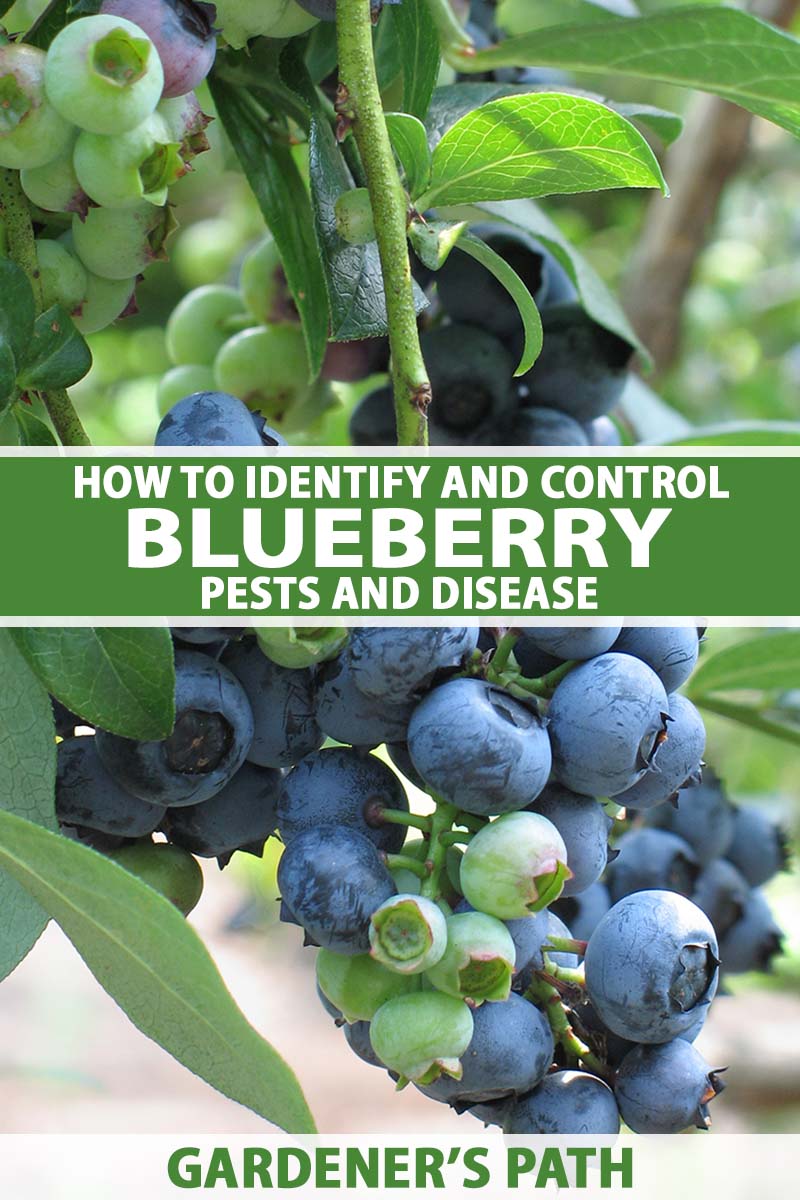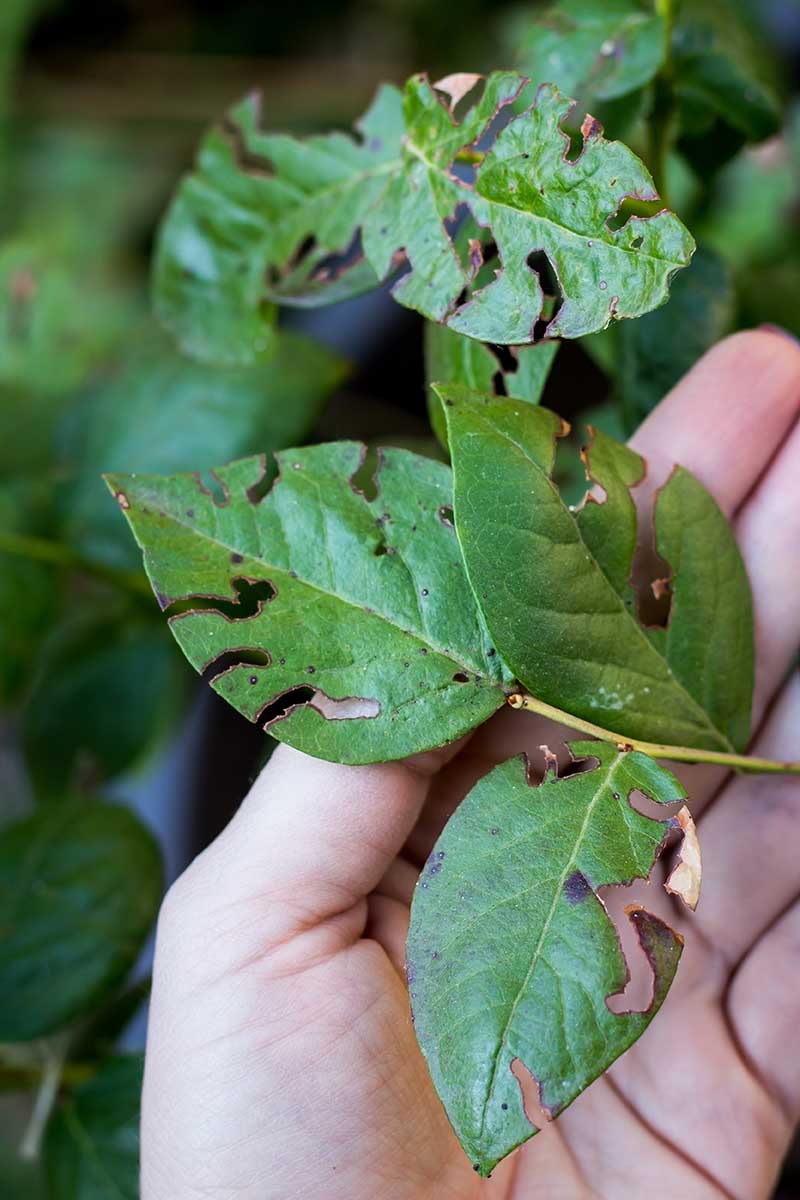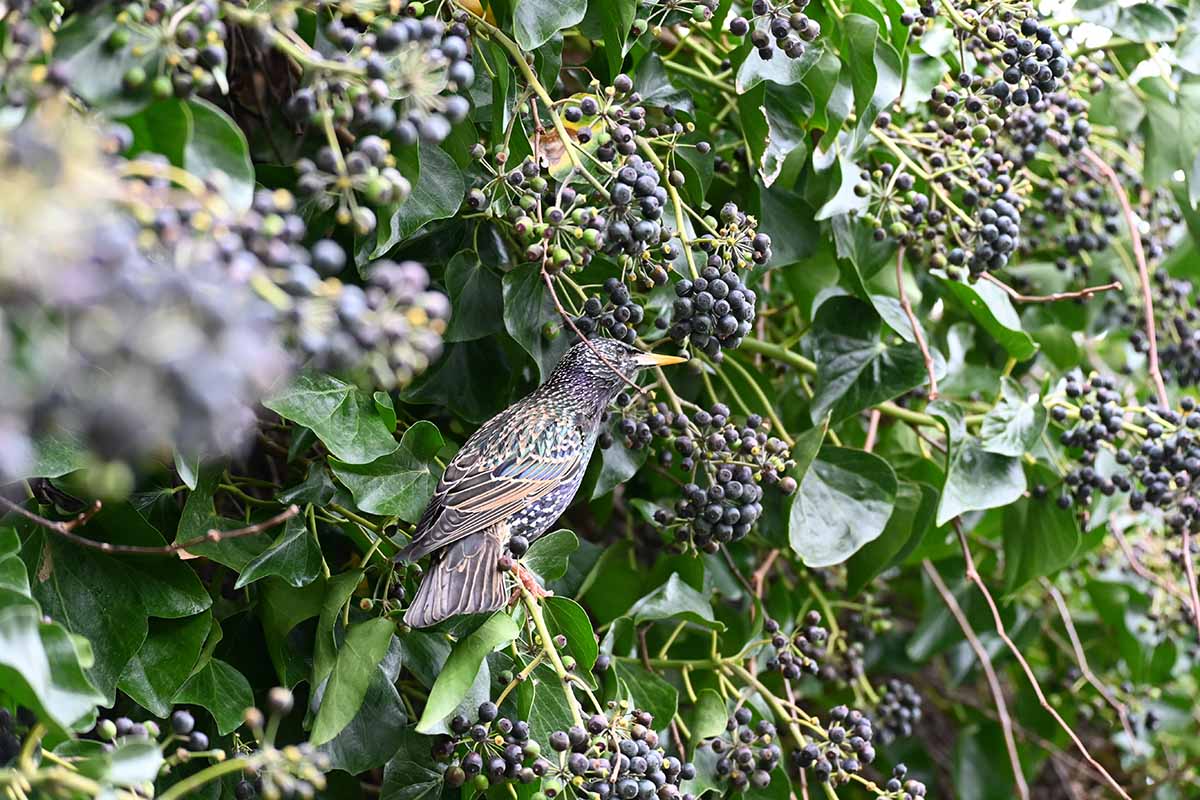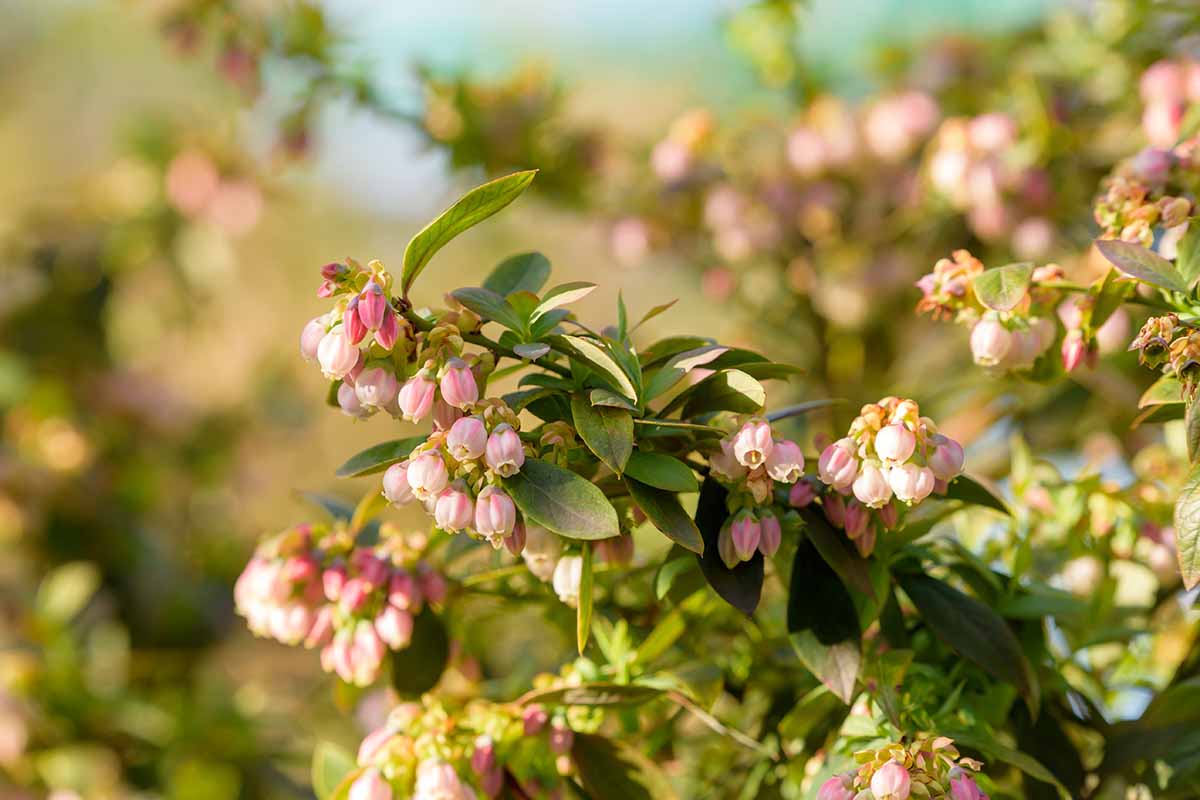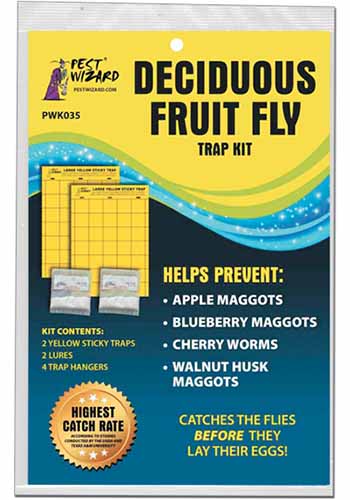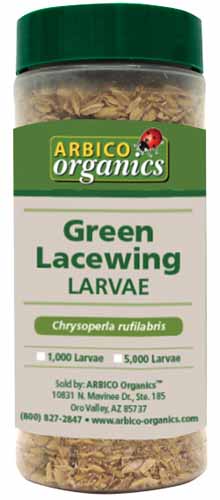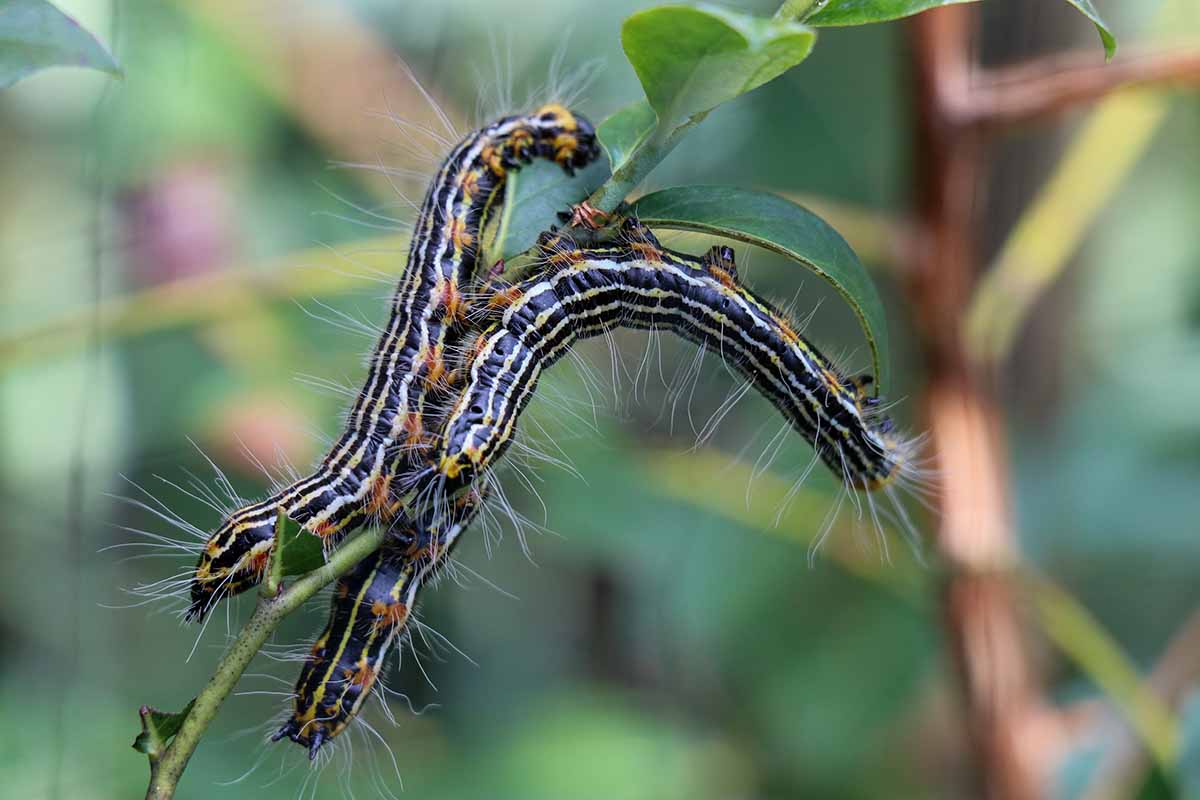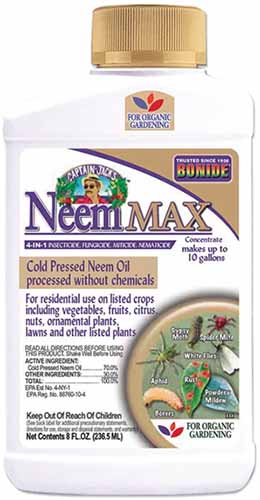Additionally, there are a number of pathogens that can cause disease, potentially leading to a reduced harvest, or in severe cases, death of your plant. We link to vendors to help you find relevant products. If you buy from one of our links, we may earn a commission. In our guide to growing blueberries, we discuss how to cultivate these plants in your landscape. In this article, we’ll go over the major pests and diseases that can affect the health of your plants. Here’s what we’ll cover, up ahead: These plants like moisture, which is why you might find them growing in boggy or swampy areas in the wild. But you’ll find that many disease pathogens favor moist conditions as well. Let’s jump into this guide to learn about the most common pests and diseases you should be aware of when growing blueberries – and what to do about them.
Pre-Planning
What’s the best way to pre-plan for potential issues with your blueberry bush? In short: support its health. Growing in the proper soil serves as the foundation of your plant’s health. Blueberries should be planted in acidic, well-draining, and fertile soil. The perfect pH ranges between 4.0 and 6.0, depending on the species. If you don’t prune, there might be some unwanted ramifications that impact plant health. Cramped or crowded plants can lead to higher humidity within the canopy, an invitation for fungal disease. One of the best ways to make sure your plant stays happy is by constantly checking on it and observing its leaves, flowers, stems, and fruit. Most of the time, you’ll be able to see the signs of an issue and take the proper steps to prevent any serious damage in advance. If you’ve previously had issues with pest insects in your garden, it can help to introduce beneficial predatory insects like ladybugs or lacewings that can help to keep populations of common insect pests at bay.
Dealing with Local Wildlife
If you’re growing blueberries, you’ll need to keep an eye out for wild animals that want a nibble. They are undeniably delicious, and some critters couldn’t agree more.
Birds
A relationship as old as time, birds and gardeners have a long history. It’s not a toxic relationship, per se, but they do love to get under our skin and eat the fruit of our labor. In our guide to protecting your blueberries from birds, you’ll find a full breakdown of the types of birds you might have to deal with, and the best barriers to protect your harvest. The most common way to deal with birds is to place bird netting over your plants at the first sign of fruiting. Protective Bird Netting Note that some gardeners caution against using it, as certain feathered visitors may become entangled in the netting if it’s not installed correctly.
Deer, Rabbits, and Squirrels
So here’s the deal – these are all different types of pests, but the way to protect your berries from all of them is basically the same. The answer is simple: you’ll need to purchase, or make, a physical barrier around your plants to keep these critters out. Fabric or plastic netting is a cheap, impermanent option for managing all types of wildlife. However, it’s possible for squirrels to chew through these barriers and get to your blueberries, so keep this in mind. For deer specifically, we’ve put together this helpful guide on how to build a DIY deer fence. If your berries are placed in an area that can be surrounded by electric fencing, this is a solid option as well, although you’ll need to make sure to space the electric fencing lines close enough together to keep squirrels from sneaking under them. If an electric fence isn’t an option, you can construct a cage around your bushes with chicken wire fencing, and either wood or PVC pipes for the frame. The size of the cage will depend on the type of blueberry bush you are growing.
Managing Insect Pests
Various types of insects may try to infest your blueberry plants. Let’s take a look at the five of the most common insect pests you may encounter.
Blueberry Maggots
Blueberry maggots are the larvae of the blueberry fruit fly (Rhagoletis mendax). These fruit flies belong to the Rhagoletis genus along with apple maggots, cherry worms, and walnut husk maggots. The flies lay their eggs under the skin of the berries right as the fruit begins to ripen. Adults can lay up to 100 eggs during their month-long lifespan, which usually begins in June or July and continues through August. When the larvae hatch, they eat the interior of the fruit and then fall to the ground to overwinter as pupae. They reside in the top few inches of soil and will emerge the following year as adults. An infestation might go unnoticed until you see maggots bursting from your fruit or when you’re processing your berries to eat later. You should test your fruits for larvae, and if you find them within the fruit, remove them immediately and freeze or burn the unusable fruits in order to kill the larvae. Do not put infested plant parts in your compost bin. An adult blueberry fruit fly has a white body crisscrossed with black bands. Deciduous fruit fly traps will work to capture the adults before they can lay eggs on your fruit. Fruit Fly Trap Kit This kit from Arbico Organics comes with two traps and two lures that you can place next to your blueberry bushes. The lures are effective for up to 90 days but traps should be replaced if they become covered with insects or debris. Traps with lures should help to keep your plants safe until the fruiting season is complete – make sure to eat a few fresh berries right off the plant just to spite these pests! As a preventive measure, remove any weeds growing around your blueberry bushes, as they can provide cover for the fruit flies. See our guide to managing fruit flies indoors and out for more tips.
Blueberry Gall Midge
You might accidentally mistake the blueberry gall midge (Dasineura oxycoccana) for a mosquito. One of the more difficult pests to spot, due to their small size, these gall midges will feed on your blueberries in a few different ways.
Blueberry Stem Borer
The blueberry tip borer (Hendecaneura shawiana) is also known to make a meal out of azalea, mountain laurel, and rhododendron stems. They will generally burrow into the lower stems of your plant to improve their chances of winter survival. This can cause the leaves to become distorted, and the buds to dry up and crumble to pieces. Since the adult midge only has a lifespan of up to two days, it’s important to manage these pests while they are in the larval stage. A botanical insecticide should do the trick. It’s important to use a liquid spray to completely drench your plant as the larvae will try and protect themselves under the leaves. Pyganic Gardening Insecticide Pyganic Gardening liquid concentrate from Arbico Organics uses an extract of the daisy flower known as pyrethrin to manage pests. It will work quickly without persisting in the environment. Be sure to follow package instructions for spraying. When in the larval stage, these pests are about one inch long and are yellowish in color. They pupate in a tunnel formed by the adult pests in spring, usually emerging as adult beetles in late June. The adult beetles are about half an inch long with elongated black antennae, brownish bodies, and dark wings. You’ll know you have an infestation if you first notice some dying shoots, and upon inspection you see small holes on the stems or branches. These pests will also leave behind small droppings that resemble sawdust that will fall onto the ground below. Plants that aren’t pruned suffer the highest risk of injury, so grab those pruning shears and get to work. You might also consider removing any nearby hosts like azaleas or mountain laurel from the planting area to reduce the risk even more.
Japanese Beetles
Japanese beetles (Popillia japonica) will typically appear at the beginning of summer, usually in June, which is why these and other types of beetles are sometimes referred to as June bugs. Japanese beetles will make a meal out of your entire blueberry bush – leaves, buds, fruit, and all! Luckily, these pests are easy to spot with their metallic green bodies and bronze-colored wing covers. You’ll want to scan your plant for Japanese beetles and check the soil below the plant for their larvae.
Scale
Since scale will usually be found eating the old wood of your plants, keep them pruned. You’ll want to prune back old, unviable stems or weak canes once a year when the plant is dormant, preferably in late winter. Treating the soil around your plant with beneficial nematodes, fungi, or bacteria will infect the grubs and kill them. Introducing milky spore bacteria to a Japanese beetle population is safe and effective for you and your plant, and can be done by purchasing the granular form from Arbico Organics. Milky Spore The granules should be sprinkled on the ground around your plant. If you’ve found adult Japanese beetles on your plant, pick them off by hand and drown them in a bucket of water mixed with dish soap. If you’re looking for more information, read our guide to managing Japanese beetles. If you’re currently dealing with an infestation and need a bit more firepower, bring in their natural predators – lacewings!
Yellow-Necked Caterpillars
You’ll recognize the yellow-necked caterpillar (Datana ministra) right away, with its yellow striped body and orange band behind its head. The adult moths have a brown-colored body with four dark lines crossing each wing. Lacewings are predatory in their larval stage and feed on soft-bodied insects while they grow. They will get right to work ridding your plants of scale. Green Lacewing Larvae You can purchase lacewing larvae as an organic pest solution from Arbico Organics. See our guide to scale for more info on dealing with these pests. These caterpillars can be devastating to your crop if present in large numbers. They will usually show up for a meal near the end of summer, around August. They can skeletonize the foliage of your plants, leaving nothing but the leaf veins behind. The best way to get rid of them is to use a product designed to kill these pest insects. A spray of Bacillus thuringiensis (Bt) can be applied according to the directions on the product packaging. If your crop has been impacted, the good news is that otherwise healthy plants should fully recover by next spring.
Managing Disease
There are a few diseases that will commonly affect blueberry bushes. With many of these, the best way to prevent disease is to prune annually and dispose of the cuttings properly, while keeping the area around your plants clear of plant waste and weeds. Let’s take a look at the common diseases that may affect your plants.
Anthracnose Ripe Rot
Blueberry bushes can fall victim to anthracnose ripe rot, caused by the fungus Colletotrichum acutatum. Most prevalent during periods of hot, humid weather, the fungi can overwinter on infected stems and spores are spread by rain and wind. You might not even know your plants have an issue until the fruit begins to ripen, because blossom infections are mostly symptomless. You might find that blossom clusters will wither and collapse into a brown husk, but most of the time this disease strikes the ripe berries. The good news about this disease is that the fungus mainly affects fruit yields without impacting the health of the plant. You’ll note the tell-tale sign of rust-colored berries and fruit rot. To control anthracnose ripe rot, it’s all about prevention. You should start with a cultivar that is resistant if available. If that’s not possible, pruning old growth from your blueberry bush annually will help to keep this fungus away.
Botrytis Blight
Botrytis blight, also known as gray mold, is caused by a fungus (Botrytis cinerea). It will usually affect blueberries in the springtime, when the weather is cool and wet. You should apply your treatment at the start of the growing season. There is a risk of fungicide resistance, so make sure you’re rotating your products each year. My personal favorite to use in this case is neem oil concentrate. Bonide Captain Jack’s Neem Max Captain Jack’s Neem Max from Bonide is available in 16-ounce bottles of concentrate from Arbico Organics. This is both a general organic fungicide and an insecticide. Follow package instructions to dilute and spray this product. Symptoms include leaf spot, wilting, and discoloration. In severe cases, it can cause dieback. Keeping your plant pruned will help protect it from most fungal infections. Spraying a copper-based fungicide when your plants begin to bloom is an effective additional preventive measure. If you find that you are dealing with a botrytis blight infection, it is best to cut away the affected stems and burn them or throw them away. Depending on the severity of the infection, you might need to cut back your blueberry bush hard. Do not put affected plant parts on your compost pile and make sure to disinfect your gardening shears after pruning is complete. You want to avoid growing conditions that help this fungus to thrive, so adequate lighting conditions and proper airflow are key. If your plants are still struggling with this fungus the following year, dead plant material that harbored the pathogen may have been left behind in the planting area. Cut away affected stems and foliage if your plant is healthy enough, or remove the plant entirely to prevent the fungus from spreading to your other garden plants.
Cane or Stem Canker
Stem canker is a fungal infection that is more common in the southern United States (checking in from northwest Florida here!). A fungus known as Botryosphaeria corticis causes the canes or stems of berry plants to form small red lesions on new growth. These lesions will then turn into deep cracks, eventually killing the stems. The best place to start is by making sure you select a blueberry plant that is resistant to stem canker. Research the cultivar you’re looking to add to your landscape for susceptibility ahead of time, as fungicides are ineffective in managing this fungus. In the southern United States, rabbiteye types are generally less prone to this disease than southern highbush blueberries. If you are currently dealing with stem canker on your plant, remove the infected portions and destroy them by burning or throwing them in your trash.
Iron Chlorosis
Iron chlorosis isn’t caused by a disease pathogen, but it is a physiological disorder that’s a common side effect of improper blueberry care. All blueberry plants are susceptible to this. Signs of iron chlorosis include yellow foliage, early leaf drop, and decreased growth. What is iron chlorosis really? In short, your plants aren’t getting enough iron. Usually, there is plenty of iron within the soil, but the pH is too alkaline and the plant isn’t able to absorb the nutrient properly. The soil pH needs to be acidic to grow these fruits, with a pH between 4.0 and 6.0, to allow for nutrient absorption. Conduct a soil test to see if pH might be the issue. In order to fix this, you’ll need to amend the soil to bring the pH back down to the sweet spot. You can do this by adding iron sulfate or sulfur to the soil. If the pH of the soil isn’t the issue, iron chlorosis can also be brought on by heat stress. These plants have very shallow roots, so if you live somewhere where temperatures regularly go above 85°F you must be sure to thickly mulch your blueberries and keep them adequately watered.
Mummy Berry
Mummy berry, caused by the fungus Monilinia vaccinii-corymbosi, is as spooky as it sounds. This fungus can overwinter on infected blueberries, surviving for up to two years. It can infect entire clusters of fruit, so it’s important to make sure you’re maintaining your plants to prevent a fungal outbreak by pruning annually. Once infected, the fruit will shrivel up and turn hard. The diseased fruits will often drop to the ground beneath the plant, or get stuck on twigs on their way to the ground – so this is where we must start with our preventative measures. According to Daniel J. Anco and Michael A. Ellis, Department of Plant Pathology at Ohio State University, the fungus overwinters in the shriveled blueberries and then globe-shaped fruiting bodies appear in spring. The easiest way to disrupt the mummy berry’s lifecycle is to remove and destroy the infected fruit. In the fall, before your plant drops its leaves, inspect for mummy berries. Remove them, placing them aside either for burning or to put in the trash. Then, in early spring right before blooms appear, destroy any developing fruiting bodies by digging them into the soil beneath your plant. Rake the soil, and add a two-inch layer of fresh soil around your plant. Remove and dispose of any remaining mummy berries that you find. Make sure you are pruning your blueberries every year and removing old, unhealthy, or dead stems. Check on your plants as often as you can, as many pest issues will be obvious if you take a good look. Traps can also help with monitoring. For the animal pests, your best bet is to rely on physical barriers to keep deer, squirrels, rabbits, and birds away. This can be done by using bird netting, or by constructing either temporary or permanent fencing or cages around your plants. I’d love to hear about your own personal experiences with pests and diseases, and how you managed them! Living in northwest Florida gives me headaches with humidity, but I’d love to hear about issues and solutions for your area too. Want to boost your next harvest? Find more information on growing delicious blueberries, starting with these guides:
Tips for Growing Lowbush BlueberriesHow to Propagate Blueberry BushesHow to Grow Blueberries in ContainersHow and When to Fertilize Blueberry Bushes
